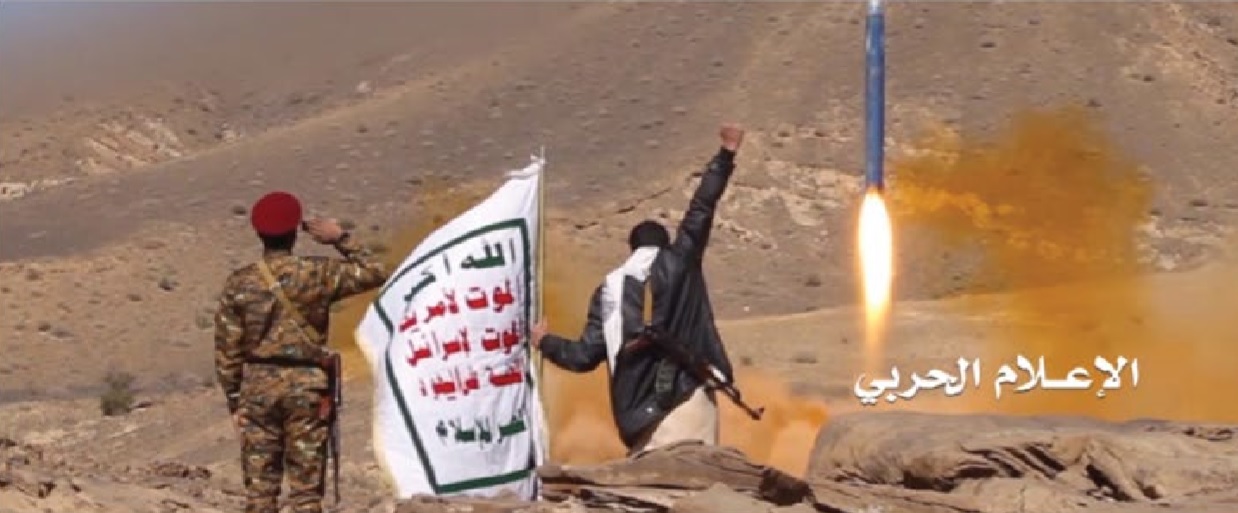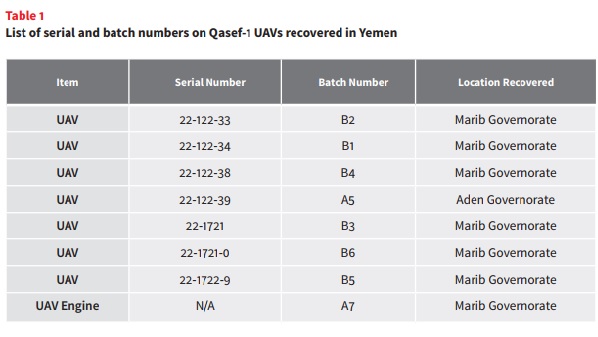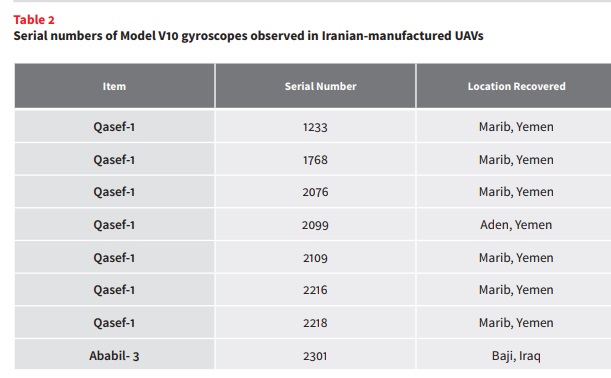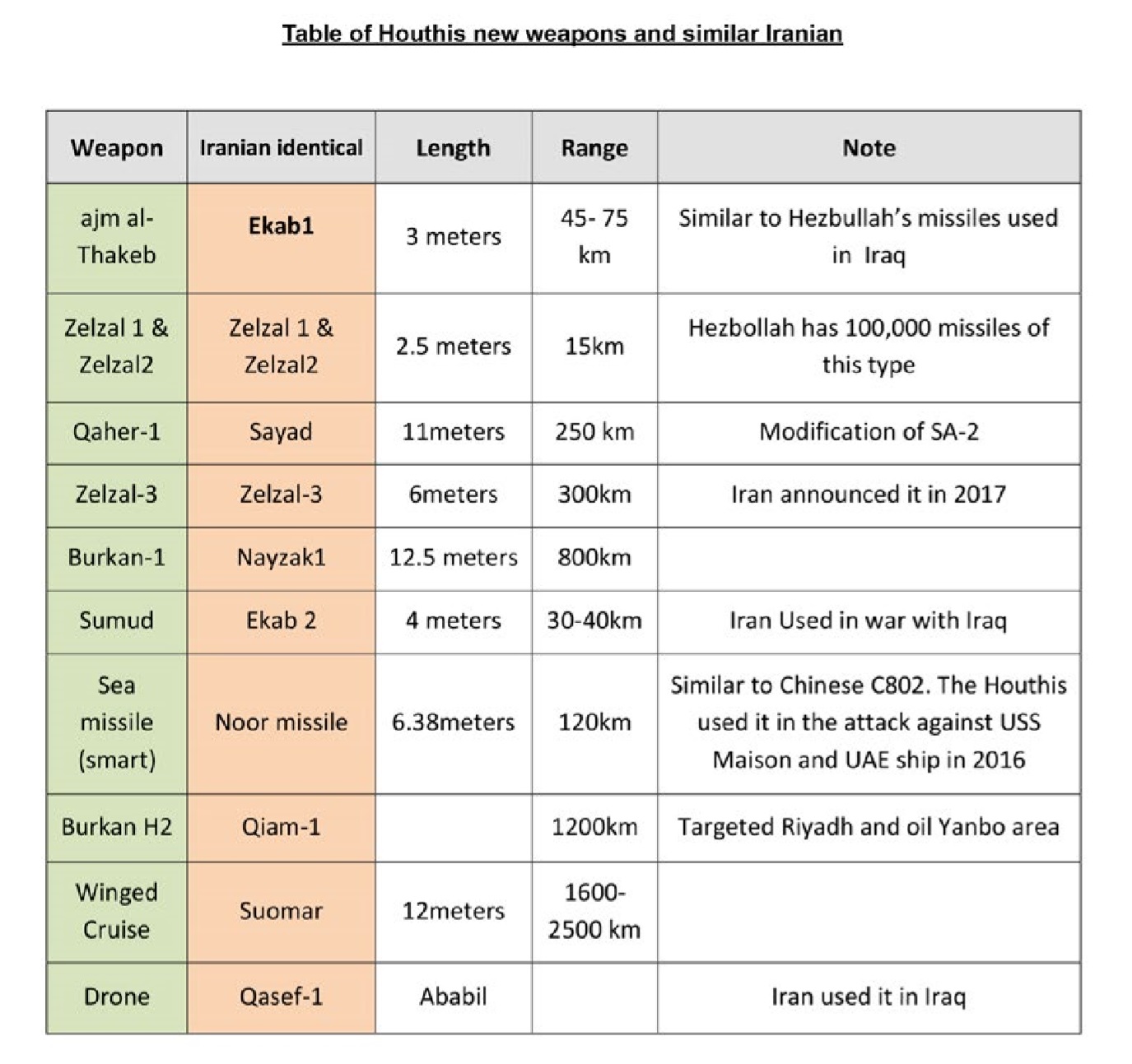The terror of Iranian weapons.. Houthi Forces Threaten Gulf Security

The brutalization of terrorism.. The Houthi Movement - The Seeds of Annihilation (2)-pdf
Introduction:
Iran has had several attempts to infiltrate deeply into the Yemeni society since the 1980s, but the Iran-Iraq war and Sana'a actual participation with its fighters alongside Baghdad against Tehran prompted the latter to declare the end of the war to attract a large number among young people belonging to the political Hashimite and Zaidi sect in Yemen.
As part of the cultural exchange, Iran managed to recruit its supporters who are now leaders of the Houthi movement, some of whom returned early. Some returned after the Houthis invaded Sana'a on September 21, 2014. The Iranian leaders said that Sana’a became the fourth Iranian capital in their possession after Baghdad, Damascus and Beirut.
Although the military relationship between the Iranian Revolutionary Guard and the Houthis is not visible - from a Western point of view - it was revealed after the Arab Coalition started its operations on 26 March 2015 to restore the state and legitimacy from the Houthis who besieged the government and chased the elected president.
The war exposed the danger of the Houthi arsenal of ballistic weapons and other weapons after they seized military and security weapons with the help from former Yemeni ally on military and security weapons; in addition to an arsenal of arms that came from Iran that represents a real danger to the regional and international - not only Yemen.
On December 19, residents of Riyadh heard an explosion that the Saudi authorities announced that it was their defense system as it had intercepted a ballistic missile coming from Yemen. This was not the first rocket by which the Houthis expressed their military capabilities. On November 4, 2017, the Houthis fired a ballistic missile at King Khalid Airport in Riyadh, a civilian facility that is more than 1500 km away from the Yemeni-Saudi border, indicates that these different capabilities were not within Yemen's arsenal of ballistic missiles.
The Houthis say they have developed ballistic missiles and that they also targeted the UAE capital, Abu Dhabi, the second Saudi ally in the Arab Coalition, with a cruise missile targeting the nuclear reactor of Barakah, on December 3, 2017. The UAE denied this ([1]). The United States of America, and Saudi Arabia and its Gulf allies accuse Iran of launching such missiles.
One of the main objectives of the Yemeni political transition period, which began according to the Gulf Initiative, was to remove ballistic missiles stocks from the hands of the Yemeni Republican Guard, an elite military force that receives direct orders from Ali Abdullah Saleh. The Republican Guard was headed by Ahmed Ali Abdullah Saleh until he was isolated by new Yemeni President AbdRabbo Mansour Hadi. But even after that, the loyalty of this elite force to the family of "Saleh" remained until al-Houthis defeated the Republican Guard and killed Saleh on December 4, 2017, two days after violent clashes between allies of the coup at the center of the capital Sanaa.
When those efforts failed, the Saudis tried to destroy the ballistic missiles stockpiles by air raids when the Houthis took control of the Yemeni capital, Sana'a, a move that was fairly effective but the war prolong enabled the Houthis to get new technologies and missiles systems they claim that they developed themselves.
"It seems that Iranian experts have helped the Houthis develop some of stored ballistic missiles to reach a larger range, but that was at the expense of the destructive capability of the missile's head, which means that firing such missiles at Gulf cities has no destructive effect, but messages of pressure and threat,” " missiles expert and informed government official said.([4]) “The Houthis can get Korean missiles or Chinese or Iranian-made through the smuggling routes that the Iranian Revolutionary Guards master," he added.
The report of the Security Council ([5]) that depended upon survey documents of the Yemeni defense force and arms data of the countries that exported weapons to Yemen, it was found that the remaining weapons are: "(384) tanks, (572) armored vehicles, (193) artillery, 75 jet aircraft, (2) Helicopters, (4) warships, (2) rocket launchers".
There is no real knowledge of the number of ballistic missiles, but the international survey shows that there are medium and long-range missiles, including six Scud-B missiles merged after the unification of Yemen in 1990, they were the property of the southern Yemen state, in addition to 21 Toshka missiles. It is believed that the Yemeni army has 15 Huasong-6 missiles from North Korea, and that the missile brigades have 85 barrels of a chemical substance - believed to be received from Saddam Hussein's regime in Iraq - but military sources in the Yemeni army have confirmed that those barrels only contain fuel for missiles. The Houthis and Saleh have 45 Huasong-5 missiles, North Korea. These missiles were launched at the Saudi border and at the positions of the pro-legitimacy National Army in other governorates at various times.
The Houthi militants began to use anti-tank guided missiles in their operations in August 2015, as videos by Houthis showed a missile attack on a Saudi Abrams tank on Saudi border as part of the Houthi movement's propaganda campaign on its Al-Masirah TV channel.
The missiles that appeared in many videos have characteristics similar to those of the Russian-made Konkurs 9M113 and 9M133, but each missile has a similar Iranian one. According to the data, Yemen did not import any of those missiles.
According to the United Nations team, it was noted that "TOW" missiles and their related electronic components were marked with the names of Iranian industrial companies. It was also noted that the Konkurs missiles were marked with characteristics similar to those of Russian and Iranian. It was noted that those missiles were probably subject to maintenance or repair in the Republic of Iran.
The range of the "Al-Najm al-Thaqib 1" is 45 km. It is equipped with a 50 kg explosive head. The length of the rocket is three meters (without fins). The Al-Najm al-Thaqib 2 has a range of 75 km. It is equipped with a explosive head that weighs 75 kg of highly explosive substance. These characteristics are similar to the Iranian "Ekab" missiles, similar also to the missiles owned by the Lebanese Hezbollah, called (Ekab 1 and Fajr 3).
The Zelzal-2 technology - an alternative to the 610 mm platforms - was transferred from the original Zelzal of the Iranian Revolutionary Guards to agents such as Hezbollah. The Republican Guards also provided Hezbollah with other variants of missiles and shells produced by the Revolutionary Guards.
In August 2016, Iran's official news agency IRNA acknowledged that the missile Zelzal-3 was an Iranian-made. "The missile that was fired at Saudi Najran city from the Yemeni territory was Zelzal-3, owned by the Iranian Revolutionary Guards."([12])
The missile was similar to the Iranian Soumar mobile missile,([16]) which forms an Iranian version of the Russian Raduga "Kh-55" missile. According to the Stockholm International Peace Research Institute's weapons transfer database, several "Kh- 55” missiles were smuggled into Iran through Ukraine since sixteen years.([17]) According to the Yemeni weapons data, there is no such type of missiles.
The Iranian Defense Minister launched the production of Soumar missiles in March 2015.([18]) Brigadier Hussain Dehghan said in a statement on the sidelines of a ceremony of unveiling the new missile that Soumar production based on modern technologies in navigation, propulsion and structure. He said the domestically-made missile can hit a broad range of targets in all circumstances thanks to its high tactical capabilities, long survival over the battlefield and radar-evading properties.
According to the German newspaper "Die Welt", the first field test of the missile was conducted in January 2017. The missile reached 600 km. The maximum range of the "Kh-55" that is transferred from the "Soumar" missile is 2500 km and can reach a speed of 860 km per hour.
The UAE “Barakah” station is located about 1100 km from the nearest possible site from which the missile was launched in Yemen, which means that any Kh-55 missile, with a speed close to its top speed, needs about one hour and twenty minutes to reach its target. In addition, most of the missile’s flight should be over Saudi Arabia - the main ally of the UAE in the Arab Coalition against Iranian-backed Houthis - but mobile missiles, like Kh-55, usually fly at low altitudes (nearly 100 meters above the earth surface) and are difficult to detect. It depends upon the guidance system of the missile. It is not known what type of guidance system for the apparent missile that appeared on al-Masirah TV channel. ([19])
A video of the missile that the Houthis fired from a seemingly mobile platform on the Red Sea coast, actually confirmed that the missile was a smart Iranian-made "Noor" missile (C802) that entered the service in the Iranian armed forces in 1991. In its specifications, "the missile is 120 km long and 6.38 meters diameter. The length of the engine is 1.24 m, while the weight of the engine is 715 kg, of which 150 kg is related to the weight of the semi-armored warhead. The missile can fly at a rate of 0.9 Mach." The Chinese missile has only a small amount of explosive material, estimated at 165 kg. The Noor missile is launched from mobile platforms and is guided by two "television" and "radar" methods. (The US Navy later confirmed those assumptions).
A report by the Arms Control Organization during the conflict in March 2017 noted that the unmanned aerial vehicles found in Yemen were of the type claimed by the Houthis to have been locally manufactured and called "Qasef-1", although their serial numbers and designs indicated that there is another form of a production line for Iranian drones known as "Ababil"([21]). The center relied on its analysis of 7 unmanned aerial vehicles, 6 of which were captured in October 2016 by a well-known Iranian smuggling through Amman. Another one was found after an attack by the Houthis near Aden in Yemen in February 2017.
The following table 1 demonstrates the similarity of serial number of Houthi seven UAVs, either those recovered or crashed down near Aden.([22])

The serial numbers indicate that another plane was shot down by the Iraqi forces during the battles with the Islamic State Organization (Daesh). The UAV was used by the Al-Hashd al-Shaebi “Popular Alliance” and fell into the hands of Daesh that managed to control the plane and re-broadcast information in its interest before being shot down by Iraqi forces.
The following table displays the serial numbers of Houthi UAVs that were recovered and the Iraqi UAV that Daesh captured indicating that the source of the UAV is Iran. [23]

This type of UAV is manufactured by the Iranian company for the manufacture of aircraft "شركت صنایع هواعیمیمازازی ایران (هسا)". The "Iranian space force" depends upon it in the manufacture of weapons. The company says that the drone "Ababil" is one of its products.[24]
Table of Houthis new weapons and similar Iranian

Therefore, we are in front of open scenarios of how ballistic missiles reached to the hands of the Houthis:
Second Scenario:
Iran has already sent ballistic missiles to the Houthis crossing the oceans and seas, until those missiles entered through the smuggling ports to Yemen without any coordination with figures in the Arab Coalition or the United Nations. But this possibility is also weak due to the large size of a single missile. This scenario can be applied to the Iranian drones as the Yemeni Army intercepted many Iranian drones en route to Sanaa during smuggling attempts through the coastal smuggling line in southern Yemen.
Third scenario:
Iran has smuggled basic materials to manufacture or develop ballistic missiles in Yemen such as spare parts of vehicles or sensitive equipment. The Iranian weapons technology may be used for reprocessing inside Yemen, including rocket fuel and dismantled ballistic missiles. This is probably the closest scenario to reality.
The Iranian contingent on Yemen uses a variety of methods to transport arms, which are shipped in the middle of goods to maintain secrecy, maximize cargo access to its destination and ensure that no link with Iran is detected if it falls into the hands of any other force. The smuggled weapons are usually concealed inside closed cages in a big container and surrounded with camouflage materials. To find out the concealed weapons, tons of cargo must be checked.
Through Unit 190, Iran relies on the shipment to be registered as a relief or humanitarian aid and can pass easily through United Nations agencies and ports. The unit has developed advanced packaging methods that give the first impression that the goods in the containers are completely clear. It makes the shape of smuggled arms similar to the goods used for camouflage, such as milk powder, or building materials or even auto parts and household items.
Routes of smuggling
Second Route: Through Somalia to Hodeidah ports
In February 2016, the joint naval forces intercepted two sailboats manufactured by Al-Mansour, a company that manufactures sailboats and ships in the city of Konarak, Iran. Since 2012, it has smuggled heroin, cannabis and arms, as it has done recently.
According to reports from Iranian organizations, Al-Mansour is located next to the headquarters of Iran's Revolutionary Guards.
Al-Mansour's sailboats carry the logo of their company in three places on the boats, one on each side and the third on the rear of the boat, as shown in the following figure:
Fares Mana’a, who was appointed by the Houthis as governor of Saada, 2012-2014, and included in the UN sanctions for the smuggling of arms to Somalia, was one of the arms dealers mentioned in a Reuters’ investigative report according Brazilian court documents. The Federal prosecutors in southern Brazil charged two former executives of Forjas Taurus in May with shipping 8,000 handguns in 2013 to Fares Mohammed Hassan Mana‘a, whom UN described as an arms smuggler active around the Horn of Africa for over a decade.
It is known in Latin America that Hezbollah and Iran have drug network that offer forged documents and IDs, according to many international media outlets that have reported about that since 2009 until today.
These weapons pass from the country of origin through Africa to the Red Sea, from which arms are being transported through commercial networks, including fish companies, through sailing boats. ([30])

According to those sources that talked to the Abaad Center ([31]), the war wounded Houthis who leave the country for treatment in India or Egypt or other countries, go for training in Iran on re-installing ballistic missiles of basic materials or the installation of materials that do not arrive from Iran through smuggling.
Two sources told the Abaad Center that their relatives were on therapeutic trips in India and then left for Iran, then Lebanon and then Pakistan for military courses, most of which included modification or installation of missiles. Two other sources said they were involved in providing schema for constructing underground laboratories, 50 feet in deep and, steel-lined to avoid any air strike. It also has capability against any explosion, with all necessary security precautions.
[1] Yemen: UAE denies launching missile towards by Houthis and the Arab Coalition provides air support for Saleh
http://www.france24.com/en/20171203, 03/12/2017
[2] Washington offers remnants of a missile fired at Riyadh: An international coalition must be formed to confront Iran (14 December 2017 / CNN / https://arabic.cnn.com/middle-east/2017/12/14/me-141217-haley-iran
[3] The Gulf initiative came after a popular revolution and the authority transferred from Saleh to deputy president, Abd Rabbo Mansour Hadi, who was already elected as the consensus president of Yemen in February 2012.
[4] One of Abaad researchers interviewed with a rocket expert and a former government official who declined to be identified. The telephone interview was held on the evening of November 15, 2017
[5] Final report of the Panel of Experts in accordance with paragraph 6 of resolution (2216) http://www.un.org/ga/search/view_doc.asp?symbol=S/2017/8
[6] CJCS Dunford Talks Turkey, Iran, Afghan Troop Numbers & Daesh/ JAMES KITFIELD/ on June 16, 2017 / https://breakingdefense.com/2017/06/cjcs-dunford-talks-turkey-iran-afghan-troop-numbers-daesh/
[7]گام بلند موشکی یمن / "سام 2" گگونه بر سعودیها "قاهر" شد + تصاوير7) https://www.tasnimnews.com/fa/news/1394/10/01/949152
[8] What is Qaher-1 missile that Yemen developed and was fired at a Saudi base
http://ar.farsnews.com/middle_east/news/13940922001046
[9] yemeni-s-75-sam-reportedly-back-in-action http://www.janes.com/article/57411
[10] پدافند هوایی کاملتر شد/ شکار در ارتفاع بالا با موشک «صیاد ۳»+تصویر http://www.farsnews.com/newstext.php?nn=13930607000419
[11]از زلزله زلزالها تا قیام سجیلها/مشهورترین موشکهای ایرانی + عکس و مشخصات کامل
[12] موشک "زلزال ۳" از یمن به پادگان نظامی "نجران" عربستان اصابت کرد https://goo.gl/2SWzRN
[13] EXCLUSIVE: With Saudi Blockade Threatening Famine in Yemen, U.S. Points Finger at Iran http://foreignpolicy.com/2017/11/22/with-saudi-blockade-threatening-famine-in-yemen-u-s-points-finger-at-iran/
[14] Houthis announce the launch of a ballistic missile at Riyadh 19/12/2017 - Al Jazeera Net - http://www.aljazeera.net/news/arabic/2017/12/19/%D8%A7%D9%84%D8%AD%D9 88% D8% AB% D9% 8% D9% 88% D9% 86% D9% 8% D8% B9% D9 84% D9% 86% D9 88% D9% 86% D8% A5% D8 % B7% D9% 84% D8% A7% D9% 82% D8% B5% D8% A7% D8% B1% D9% 88% D8% AE-% D8% A8% D8% A7% D9% 84% D8 % B8% D8% AA% D9% 8A-% D8% B9% D9% 84% D9% 89-% D8% A7% D9% 84% D8% B1% D9% 8A% D8% A7% D8% B6
[15] Al-Harbi, Scenes of the moment of the launch of a cruise missile at the nuclear reactor in Abu Dhabi 03-12-2017 http://almasirah.net/gallery/preview.php?file_id=10367
[16] The missile was named Soumar, which is the name of an area of operations in the Iran-Iraq war in Kermanshah province in western Iran
[17] Moshk «Somar» شبيه به کروز 2500 كیلوتری روسی است / شناسايی کروزها دشوار است 1393/12/18 / فارس / http://www.farsnews.com/newestext.php?nn=13931218000047
[18] Video: Iran unveils Somar long-range missile - World 08 Mar 2015 http://www.alalam.ir/news/1683375
[19] Possible Iranian Links to the Claimed Houthi Missile Launch Against the UAE
[20] http://thenewkhalij.org/node/60578
[21] Tehran accused of giving Yemen rebels kamikaze drones Richard Spencer- - March 22 2017 https://www.thetimes.co.uk/edition/world/tehran-accused-of-giving-yemen-rebels-kamikaze-drones-bftzm6t9x
[22] Source of the table: Organization of Arms Research in Conflict – Kar -iranian technology transfers to yemen March 2017
[23] Previous source
[24] شرکت صنایع هواپیماسازی ایران http://www.hesa.ir
[25] A televised statement from Iran's Revolutionary Guards commander Mohammad Jafari November 2017 Iranian television showed the first channel.
[26] "Scud" of Houthis ignites dispute between Saudi Arabia and Egypt / 12 October 2016 / Middle East - Lebanon - https://goo.gl/bB3okE
[28] Getting nowhere in Yemen, Riyadh blames Oman /2-9-2016 https://www.intelligenceonline.com/government-intelligence_grey-areas/2016/08/31/getting-nowhere-in-yemen-riyadh-blames-oman,108179010-ART
[29] maritime conflicts of weapon supplies to Somalia and Yemen-Deciphering-A-Link-To-Iran- conflictarm- Iran, November 2016
[30] Iranian networks to smuggle arms to Yemen / Adnan Hashim / 26 September 2016 / http://www.yemenmonitor.com/Details/ArtMID/908/ArticleID/12072
[31] Four sources, one of whom worked to take precautions for any explosion in the underground building. He said that the Houthis put a cover on his head until they arrived at the place after six hours travel and then a break in a deserted house for two hours before being transferred by a third party to the site by traveling on rough and desert roads for two hours in mid-2015. He pointed out that only those who were present at the site were the Houthi guards and 8 construction engineers. He returned to his house after two weeks of work there, which included staying in the same area that he said seems to be a large farm. Then he said they covered his head again and took him back






